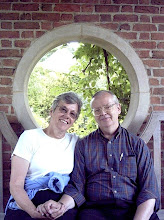It is the duty of the author of a scientific paper to make the subject matter clear to at least two people, one of whom may be the author.
— Freeman Dyson quote as Fronticepiece to Reality & Empathy by Alex Comfort.
....Oddly enough, the best description of how it might be apprehended comes not from a physicist but from the amateur yogi and occult philosopher P.D. Ouspensky, describing a vision he experienced during an altered state of mind:
"In trying to describe this strange world in which I saw myself, I must say that it resembled more than anything a world of very complicated mathematical relations . . . in which everything is connected, in which nothing exists separately, and in which at the same time the relations between things have a real existence apart from the things themselves; or possibly 'things' do not exist, and only 'relations' exist." (1930)
Ouspensky was a very odd fish, and certainly, from the remainder of his book, no great scientific thinker, but here for once his language is strikingly closer than that of the physicists. He is coy about the means used to obtain this vision (they appear to have included smoking pot). Whether he contrived to see this natural implicate or was simply guessing, is a matter of some interest, as we shall see later, but his image, like that of Liebnitz, accurately describes the model which one trend in mathematical physics is attempting to convey.
— Alex Comfort, Reality & Empathy, pp. 19-20.
Bigotry and credulity are misshapen sisters, and common intellectual prudence counsels against contracting wedlock with either. That paranormal phenomena do not exist is an opinion; that they certainly exist is an overstatement; and that we know a priori that they cannot exist is manifest nonsense. As in the case of other apparent phenomena, the most reasonable position would be that they represent real effects, to be explained until shown to be otherwise. They do not follow from any model of quantum physics, though some of them might prove eventually to have roots in the double take between Boolean logic and wave-function on perception in the brain; and contortions of the theoretical explainers [Rao, 1966] spring from clinging to a Newtonian universe as "real." The specific point on which paranormal phenomena might comment is not the nature of matter or energy, but the epiphenomenal character of mind. The nearest they can come to commenting on physical theory is as very different examples of a "second layer" show-through, analogous to certain postulated examples in physics. Nor, as we shall see, would they necesarily provide a way out of existential anxiety that would be any more flattering to our wish for permanent I-ness than the epiphenomenal model. It might be worse stressing this in order to let some of the grosser pressures out of the subject.
— Alex Comfort, Reality & Empathy, p. 219.
Like dazzled insects skimming the bright airs,
You are back on the road again, the path leading
Vigorously upward, through intelligent and clear spaces.
They don't make rocks like us any more.
And holding on to the thread, fine as a cobweb, but incredibly strong.
Each advances into his own labyrinth.
— John Ashberry, from "Never Seek to Tell Thy Love."
Subscribe to:
Post Comments (Atom)

No comments:
Post a Comment